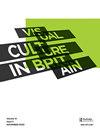Introduction: William Blake: The Man from the Future
Q2 Arts and Humanities
引用次数: 1
Abstract
Much has been written about the idea of Blake as a rebel of cultural thought, a dreamer of alternative realities, a preparer of the way, the oracle of unfettered literary creativity; relatively little attention has been given to considering Blake’s status as an agent ‘forwardness’ in the visual and performing arts. Why is this so? To approach an answer, we need to review how Blake has been imagined as a friend of the future, a revolutionary, whose art – or ideas about art – outran his own period and predicted later developments in visual culture. We can begin with a few words concerning the history of the vision in which Blake is modelled as an artistic forerunner, the figure who addresses ‘Children of the future Age’. One way of describing such thinking is to see in this a gradual process resulting in the creation of a counter-discourse to the negative model, established in the early nineteenth century, by the critic Allan Cunningham, and then codified by others, where Blake is little more than a pathogenic figure, a furious maverick whose fiercely energetic art is a reflex of mental instability. Although Cunningham’s savage, fanatical and dangerous Blake has never been eradicated from popular culture – consider, for instance, the use of his The Ghost of a Flea in The Limehouse Golem (2017) – this visionwas contained, neutralized, by the appearance of other discursive clusters that allowed influential critics to recalibrate Blake’s mindset and reevaluate his art. In the writings of Alexander Gilchrist, A.C. Swinburne and the Rossetti brothers, Blake’s incomprehensible otherness confirmed his status as artistic magus: their all-seeing eternal creator proclaimed the cognitive authority of art by preaching the eternal life of the image. In the articles that follow, the contributors provide detailed case studies of artists, commentators and thinkers who expanded the Pre-Raphaelite and Aestheticist modelling of Blake. For instance, by the early twentieth century this vision of a triumphant Blake would be embellished and supplemented by other strong readings, asArthur Symons, A.G.B. Russell, Laurence Binyon and Darrell Figgis credited Blake with a continuous or evolving programme of artistic vision. Their Blake was bigger than the imagination of any one expositor. Bubbling with superabundant life, this super-creator equated the image with the generation of light-carrying forms and emphatic patterns. This Blake was modernistic in terms that came close to those described by Clement Greenberg, the High Priest of mid-twentieth century art theory: his art was subject to a process of auto-critique, the systematic separation of pictorial principles from literary or descriptive conditions. Sometimes allied to this vision of an art founded on the idea of rhythmic precision, and sometimes working against it, was the claim that Blake’s true subject was简介:威廉·布莱克:来自未来的人
关于布莱克作为文化思想的反叛者、另类现实的梦想家、道路的准备者、无拘无束的文学创造力的预言家的想法,已经有很多文章;相对而言,很少有人注意到布莱克作为视觉和表演艺术中“前卫”经纪人的地位。为什么会这样?为了找到答案,我们需要回顾Blake是如何被想象成未来的朋友,一个革命者,他的艺术或艺术思想超越了他自己的时代,并预测了视觉文化的后期发展。我们可以从几句关于布莱克作为艺术先驱的愿景历史的话开始,他是“未来时代的孩子”的代言人。描述这种思维的一种方式是,在这个渐进的过程中,评论家艾伦·坎宁安(Allan Cunningham)在19世纪初建立了负面模式,然后被其他人编纂成法典,布莱克只不过是一个病态的人物,一个愤怒的特立独行者,其充满活力的艺术是精神不稳定的反映。尽管坎宁安笔下野蛮、狂热和危险的布莱克从未从流行文化中被根除——例如,考虑一下他在《Limhouse Golem》(2017)中使用的《跳蚤的幽灵》——但其他话语集群的出现,让有影响力的评论家能够重新调整布莱克的心态,重新评估他的艺术,从而遏制和中和了这种愿景。在亚历山大·吉尔克里斯特(Alexander Gilchrist)、A.C.斯温伯恩(A.C.Swinburne)和罗塞蒂兄弟(Rossetti brothers。在接下来的文章中,作者提供了艺术家、评论家和思想家的详细案例研究,他们扩展了拉斐尔前派和唯美主义者对布莱克的建模。例如,到了20世纪初,这种对胜利的布莱克的愿景将被其他强有力的解读所修饰和补充,正如亚瑟·西蒙斯、a.G.B.罗素、劳伦斯·比尼恩和达雷尔·菲吉斯所认为的那样,布莱克具有持续或不断发展的艺术愿景。他们的Blake比任何一个解释者的想象都要大。充满了丰富的生命,这位超级创造者将图像等同于承载光线的形式和强调图案的产生。这个Blake是现代主义的,与二十世纪中期艺术理论的大祭司Clement Greenberg所描述的非常接近:他的艺术受到了一个自动批判的过程,即绘画原则与文学或描述性条件的系统分离。有时与这种建立在节奏精确理念基础上的艺术愿景相结合,有时又与之背道而驰的是,布莱克的真实主题是
本文章由计算机程序翻译,如有差异,请以英文原文为准。
求助全文
约1分钟内获得全文
求助全文
来源期刊

Visual Culture in Britain
Arts and Humanities-Visual Arts and Performing Arts
CiteScore
0.60
自引率
0.00%
发文量
1
 求助内容:
求助内容: 应助结果提醒方式:
应助结果提醒方式:


